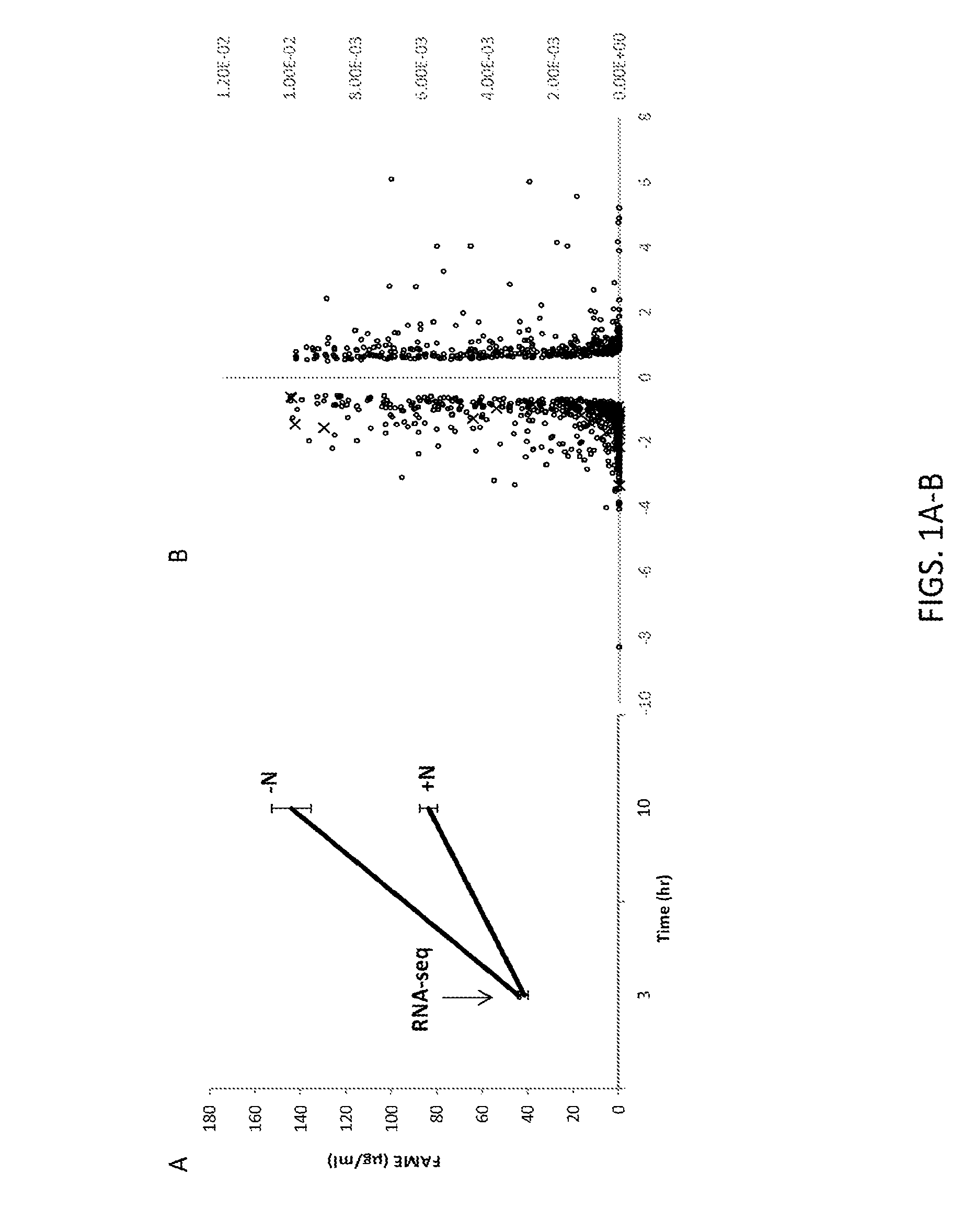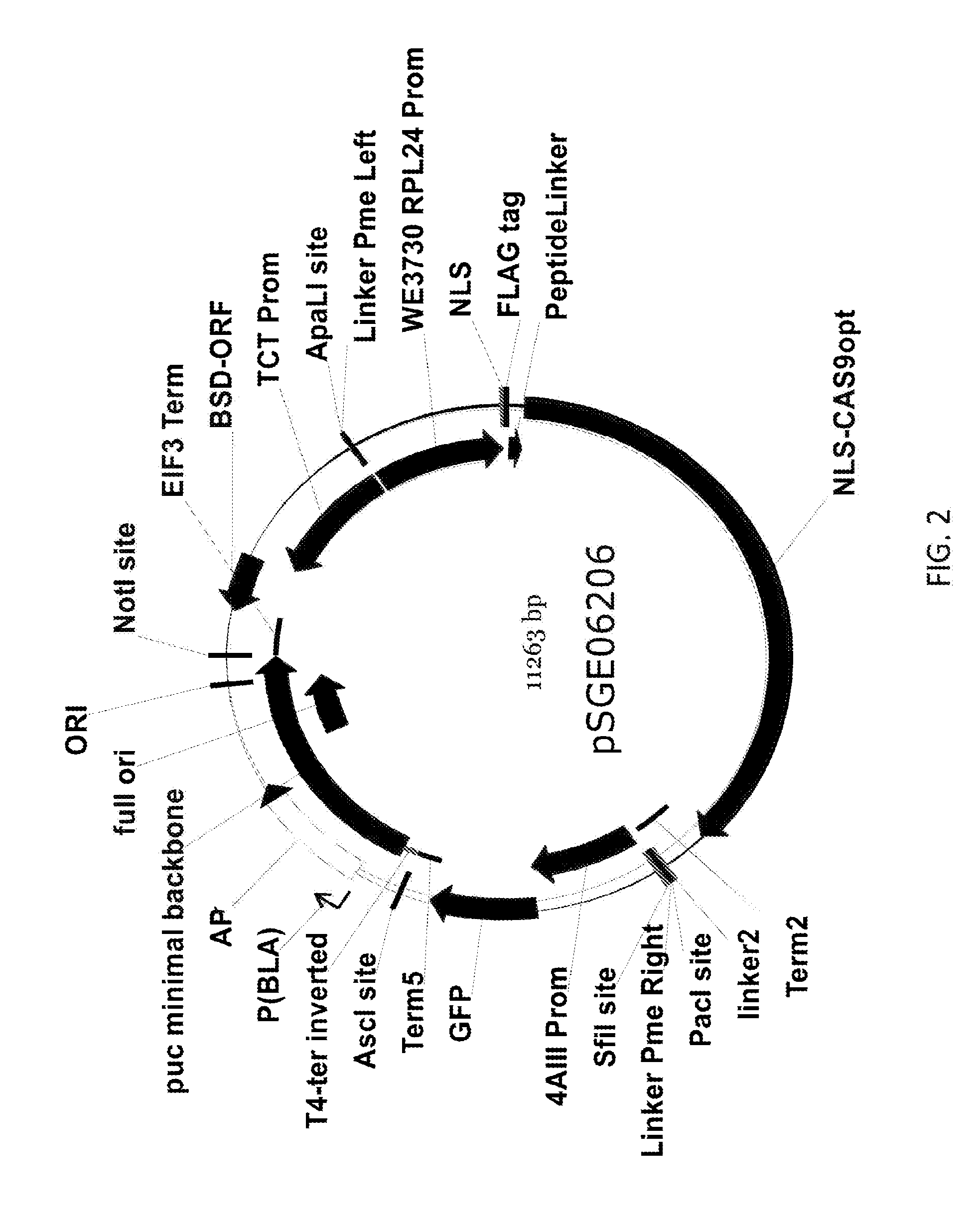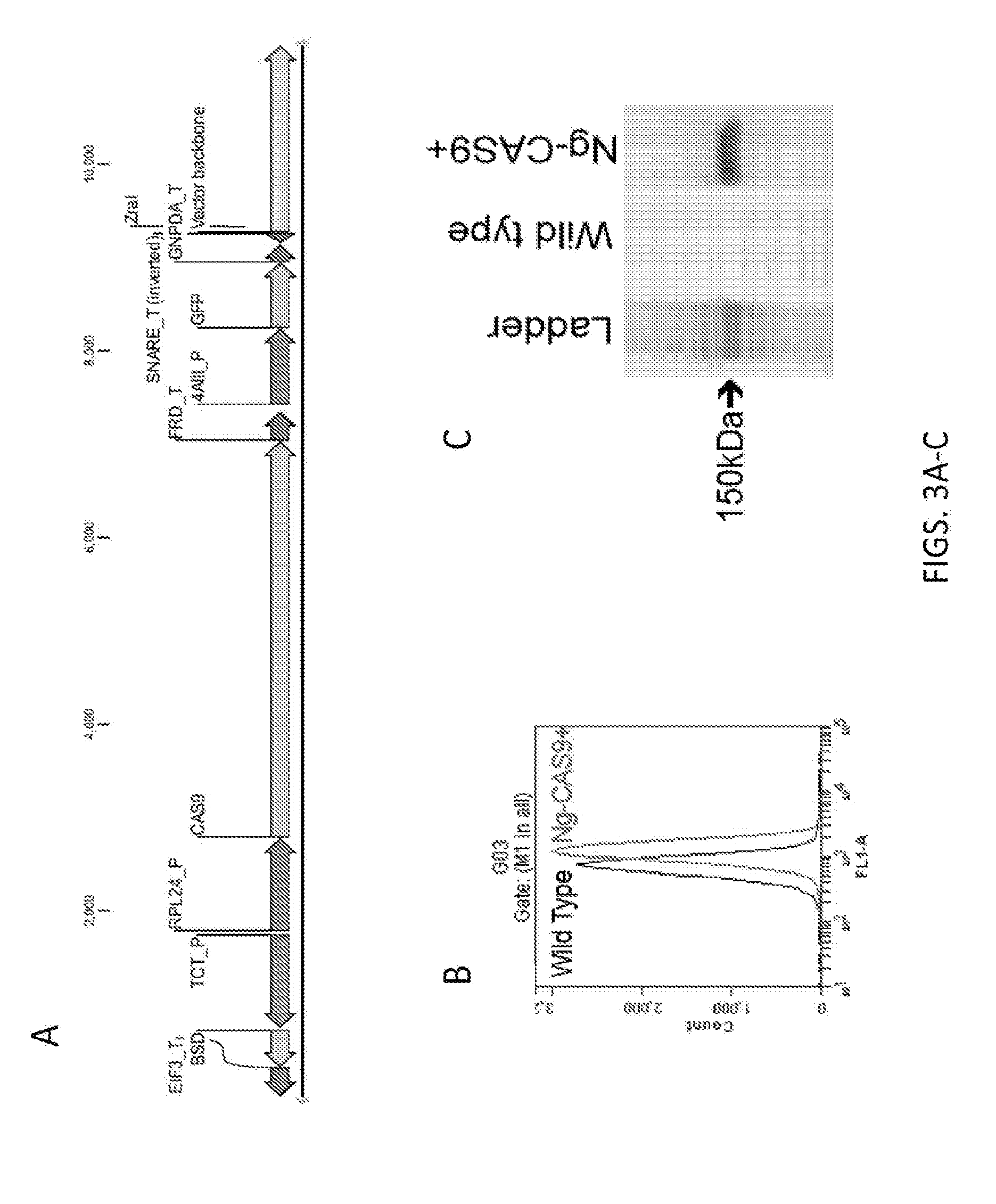Microorganisms having increased lipid productivity
- Summary
- Abstract
- Description
- Claims
- Application Information
AI Technical Summary
Benefits of technology
Problems solved by technology
Method used
Image
Examples
example 1
Identification of a Zinc-Cys Domain Polypeptide Downregulated During Nitrogen Starvation
[0256]Various strains of Nannochloropsis accumulate high levels of triacylglycerols (TAG) storage lipid during nitrogen deprivaton and correlations between increased TAG production and correlations between TAG accumulation and presumed underlying changes in gene expression in different metabolic pathways leading to TAG synthesis have been reported (Radakovits et al. (2012) Nat Commun 3: 686; Li et al. (2014) The Plant Cell 26: 1645-1665; Corteggiani Carpinelli et al. (2014) Mol Plant 7:1645-1665). To identify genes encoding regulators that influence lipid biosynthesis and accumulation, the early transcriptional response of Nannochloropsis cells subjected to N-deprivation (−N) was analyzed. A comparative transcriptomics experiment was performed in which the RNA transcript levels of genes of Nannochloropsis gaditana cells under nitrogen starvation, during which Nannochloropsis induces storage lipid...
example 2
Knockout of Transcription Factor Genes in Nannochloropsis
[0261]All 20 transcription factor genes that were discovered to be differentially regulated under nitrogen deprivation (Table 1) were targeted for insertional knockout mutagenesis via the development of a high-efficiency Cas9-expressing editor line in Nannochloropsis (see WO 2016 / 109840 and corresponding U.S. application Ser. No. 14 / 986,492, filed Dec. 31, 2015, incorporated herein by reference in its entirety). As described in U.S. Ser. No. 14 / 986,492, a highly efficient Nannochloropsis Cas9 Editor line, N. gaditana strain GE-6791, expressing a gene encoding the Streptococcus pyogenes Cas9 nuclease, was used as a host for transformation with a chimeric guide RNA and donor DNA for insertional knockout.
[0262]To produce the high efficiency Nannochloropsis Cas9 Editor line, a Nannochloropsis strain was engineered and isolated that exhibited expression of the introduced cas9 gene in essentially 100% of the cell population of a gr...
example 3
ZnCys-2845 Knockout Mutant
[0266]The ZnCys-2845 gene (Naga_100104g18, second row of Table 1) was targeted for disruption by first making a DNA construct for producing a guide RNA in which the construct included the sequence of a chimeric guide engineered downstream of a T7 promoter. The chimeric guide sequence included an 18 bp target sequence (SEQ ID NO:39) homologous to a sequence within the ZnCys-2845 gene sequence that was immediately upstream of an S. pyogenes cas9 PAM sequence (NGG), and also included the transactivating CRISPR (tracr) sequence. The chimeric guide sequence was synthesized by first making a DNA template made up of complementary DNA oligonucleotides that included the T7 promoter sequence (SEQ ID NO:40 and SEQ ID NO:41, made by SGI-DNA, La Jolla, Calif.) that incorporated the T7 promoter sequence and were annealed to create a double-stranded DNA template which was used in in vitro transcription reactions using the MEGAshortscript™ T7 Kit (Life Technologies #AM1354...
PUM
 Login to View More
Login to View More Abstract
Description
Claims
Application Information
 Login to View More
Login to View More - R&D
- Intellectual Property
- Life Sciences
- Materials
- Tech Scout
- Unparalleled Data Quality
- Higher Quality Content
- 60% Fewer Hallucinations
Browse by: Latest US Patents, China's latest patents, Technical Efficacy Thesaurus, Application Domain, Technology Topic, Popular Technical Reports.
© 2025 PatSnap. All rights reserved.Legal|Privacy policy|Modern Slavery Act Transparency Statement|Sitemap|About US| Contact US: help@patsnap.com



